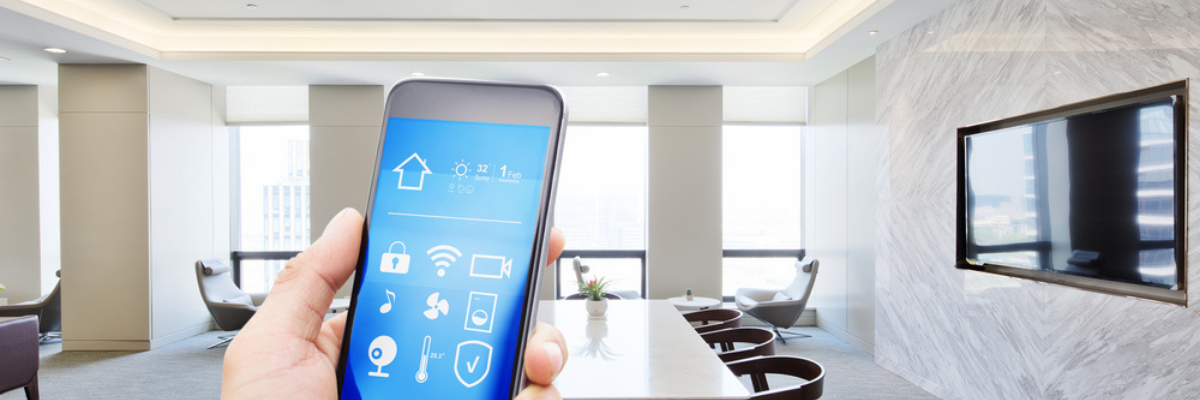Technology is changing so fast in the HVAC and Refrigeration industry that it can be a challenge to keep up with all the latest innovations. That’s especially true this year when we won’t have the chance to attend trade shows and see the newest offerings.
Here are a few interesting new HVAC technology solutions that have the potential to address the top concerns of HVAC customers: improving comfort and controlling costs.
What’s new in HVAC technology: 3 solutions that save money and improve comfort
1. Solar air conditioning reduces the cost of cooling
Solar-powered air conditioning isn’t a brand new HVAC technology, but it is an idea that’s beginning to catch on here in New York City. That may be due to the fact that NYC electricity costs are 40% higher than the national average.
In spite of installation challenges (including limited rooftop space), NYC ranks sixth in the country for solar panel installations in 2019, and first on the east coast. The city is also home to some of the largest rooftop solar arrays on apartment complexes in the country.
According to energy.gov, air conditioners use 6 percent of all the electricity produced in the United States. And we need cooling most when the sun is at its strongest. So solar air conditioning is a logical pairing of one of our biggest energy draws with our most promising renewable energy resource. Here are a couple of types of solar air conditioners that are being installed in New York City:
Photovoltaic (PV) hybrid solar air conditioner. This new HVAC technology uses photovoltaic cells to power a traditional HVAC unit. The solar panels charge a battery, and the air conditioner runs off the battery. The great thing about this option is that you can upgrade an existing HVAC system by patching in solar panels. The solar cells can also power other appliances in the building when the air conditioner is not in use.
Thermal hybrid solar air conditioner. This solar air conditioner uses the power of the sun to assist the compressor in heating and compressing refrigerant gas. The refrigerant runs through an array of vacuum tubes on the roof and gets heated by the sun. This process reduces electricity usage by 30 to 40 percent.
Large, sunny, south-facing rooftops make the best candidates for solar air conditioning systems since they can generate more solar power, and also have a greater need for efficient cooling.
Keep in mind that there are incentives from the city, state, and federal government that can help to offset the upfront cost of this new HVAC technology.
2. Easy and affordable zoning improves comfort in smaller spaces
Just about every HVAC customer wants and needs customized comfort zones. Homeowners will have a kitchen that gets too hot or a bedroom that’s always too cold. In an office setting, conference rooms, south-facing offices, and areas with heat-producing equipment tend to be overheated. Restaurant kitchens are always too hot while dining areas can be too chilly.
Creating independently-controlled comfort zones to improve these conditions used to require expensive equipment and a complicated installation. The benefits usually didn’t justify the cost for a home or for a smaller commercial space.
Now there’s a new HVAC technology solution that gives customers control over every room within their space (using their smartphone) for a much smaller price tag.
Ecovent is a system that uses plug-and-play sensors, wirelessly-controlled vents, and a smart hub to give occupants complete control over the temperature in every room. It uses room sensors that plug into standard electrical outlets and monitor temperature, pressure, and humidity. The smart hub continuously monitors conditions throughout the system to effectively and safely manage the airflow and pressure, so there’s no danger of rising static pressure from closing off vents.
The vents are super quiet and easy to install, and compatible with standard forced air (central) systems and most Wifi thermostats.
3. Workplace temperature control apps help boost productivity
Office temperature ranks as the number one workplace complaint from employees. (This is probably not news to HVAC service providers!) Companies want to save money by reducing energy expenses. But they also lose money through reduced productivity when employees are too hot or too cold.
HVAC service providers can help companies to find the ideal workplace temperature for productivity and energy efficiency, using new HVAC technology in the form of apps that address office temperature issues in the workplace.
Comfy is an app that allows employees to report their comfort level throughout the workday. The Comfy system is integrated with the HVAC system, and the employees’ requests are used to tweak the temperature in appropriate zones by adding a 10-minute blast of warm or cold air.
Employees within a specific zone can see requests from others in the same area. That feature allows people to voice their concerns while also encouraging communication when requests conflict.
CrowdComfort allows occupants to report office temperature issues (such as a meeting room that’s too cold) via a smartphone app. Facilities staff get notified immediately, can see the exact location of the problem zone, and can make adjustments to the HVAC system in real time. In the past, that problem would be addressed hours or days later with a manual work order.
More helpful resources for HVAC service providers
With so many unknowns, planning for the upcoming season is challenging. Our report on the state of the HVACR industry in New York City (based on surveys of MSCA members) can provide some context. If you haven’t already, take a look at the results.
Also, check out our educational articles and training videos that can help your technical staff grow their skills.

